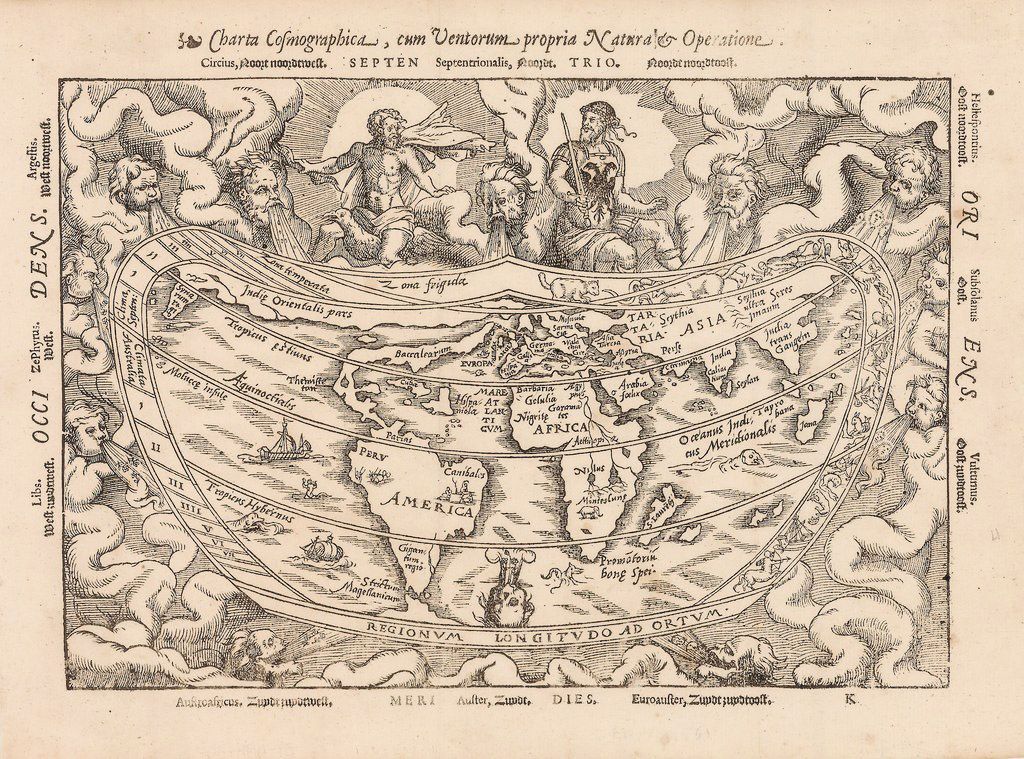Featured Antique Map: 16th Century Map of the World by Petrus Apianus
Charta Cosmographica, Centorum propria Natura et Operatione.
By: Petrus Apianus
Date: 1544 / 1553 (published) Antwerp
Dimensions: 7.5 x 10.8 inches (19 x 27.4 cm)

This is an authentic antique map of the world, by Petrus Apianus. This is the second woodblock cut for the world map in Apian’s Cosmographia, published out Antwerp in 1553.
The map displays early 16th century knowledge of the world in a truncated cordiform projection. Much of the geographic information that makes up the map was based on a larger map of the world by Gemma Frisus, published in 1540, which has since been lost. The main differences from this second block example to the previous first block are the additions of Anglia and Scotia, and the word Europe has been leveled out.
Throughout much of the map, a lack of geographic detail is replaced by place names, and numerous vignettes of animals and natives. North America appears as an elongated peninsula that bears the title Baccalearium, which is a reference to the exceptional cod fishing off the north Atlantic coast of the new world. Just below is one of the earliest depictions of a Yucatan peninsula (as opposed to an island). South America features a vignette of natives with reference to their cannibalistic means of survival. The oceans are embellished with sailing ships and sea monsters.
The map displays an exceptional amount of decorative and allegorical detail. Atop are two deistic figures, one of which are wearing armor bearing the holy Roman double eagle and are believed to be a dedication to Emperor Charles V. The border is made up of constellations (right) and levels of climate (left). Surrounding the map, within a web of clouds are twelve wind-heads, three of which are presented with a cadaverous appearance, representing the southern winds believed to carry the plague.
Find this map and more at (https://www.hjbmaps.com)